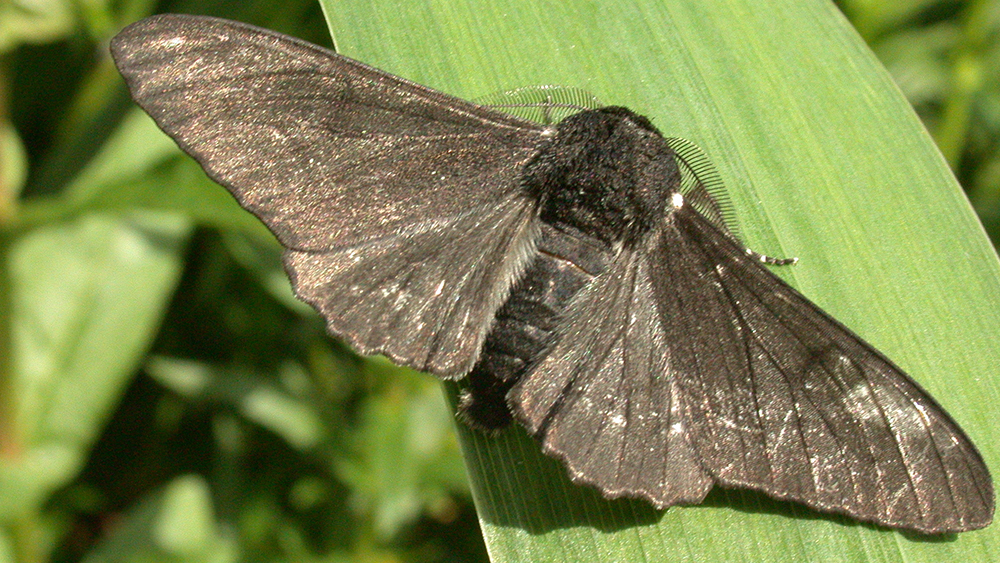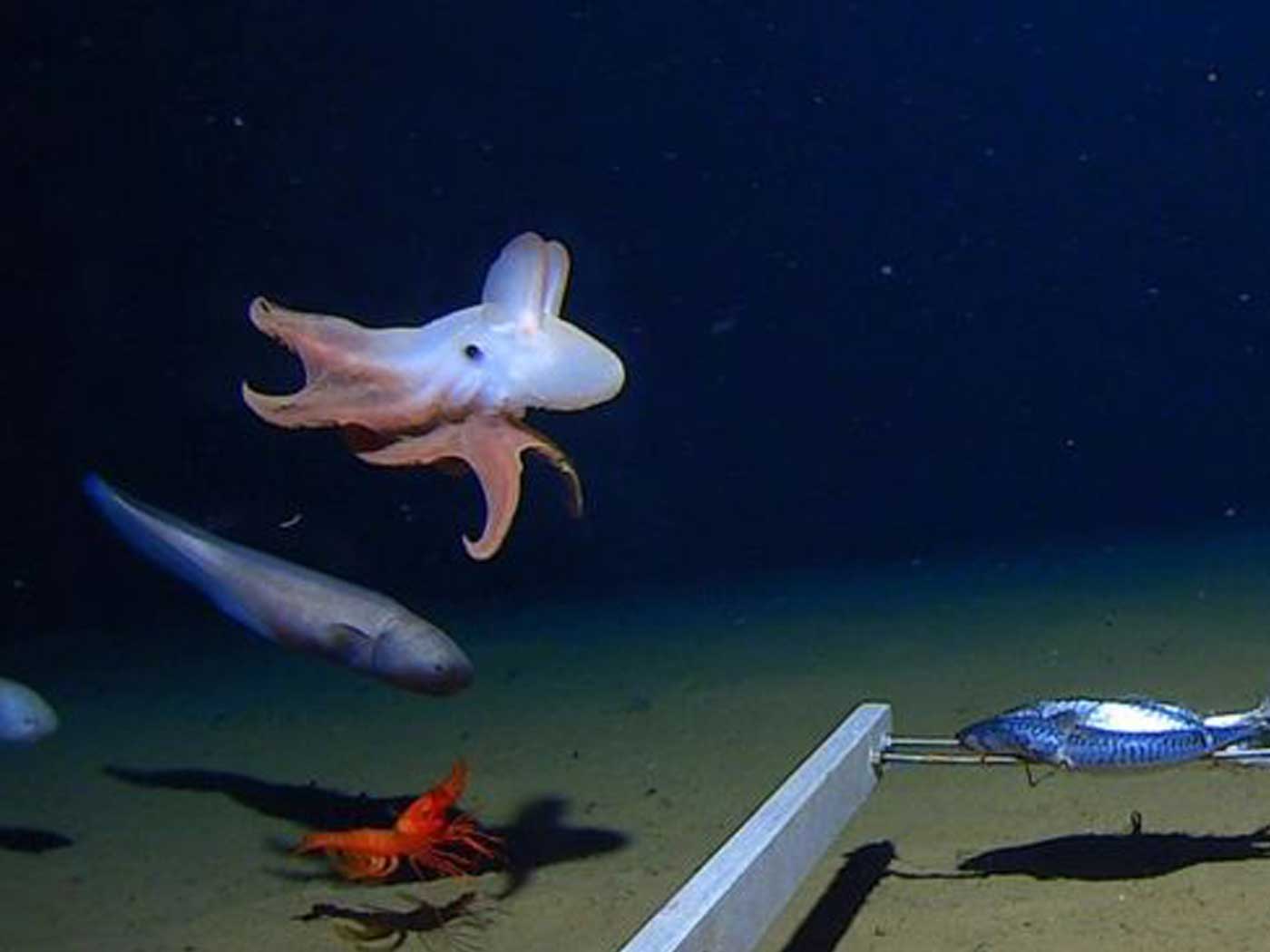It seems obvious that when Britain’s trees were covered in black coal soot during the industrial revolution that the numbers of black-colored peppered moths would increase. But several recent studies indicate that a change to black coloration in creatures in response to pollution, called industrial melanism, may not be directly related to camouflage.
Claire Goiran studies marine ecology for the University of New Caledonia. She has produced some interesting findings about several different types of deadly seasnakes found in the warm waters surrounding this tropical island. Her recent paper found that damselfish (Pomacentridae) will attack certain species of seasnakes to defend their eggs.1 Interestingly, damselfish seem to be able to distinguish between seasnake species using cues such as size, color, and behavior. Occasionally though, damselfish will mistakenly attack a darker (melanic) species of snake that they would normally avoid. It appears that damselfish sometimes confuse the rare dark form of seasnake (which is normally light-colored) for a species called the turtle-headed seasnake (Emydocephalus annulatus) that is often melanic (black-colored) and regularly eats damselfish eggs.
Interestingly, the water surrounding these islands is usually crystal clear. This raises the question: Why would there be melanic forms of these snakes? In 2017, Claire Goiran discovered that the turtle-headed seasnake is normally pale with dark bands or blotches in waters away from New Caledonia’s bays.2 However, a fully black subpopulation lives in the polluted offshore waters near urban-industrial areas. The pollution has not turned the bay water darker. So these black snakes are in fact less camouflaged when surrounded by light sand and coral. Water in these bays is contaminated by high levels of naturally occurring trace metal elements (cobalt, manganese, nickel, lead, and zinc) from the runoff of the mineral rich island. Mining operations have dramatically increased metal concentrations flowing into the bays. These elements are dissolved in the water. So, even though the water remains clear, the trace elements are a pollutant and can build up inside of marine creatures. This could present various degrees of toxicity to sea creatures including turtle-headed seasnakes.
The puzzling question is: Why did these turtle-headed seasnakes begin showing signs of industrial melanism as mining activity increased—even though it was making them less camouflaged? Trace elements of these metals build up internally as seasnakes ingest prey that also had high levels of these elements. Through a still unclear mechanism, the trace elements are transported to the snake’s skin. It turns out the melanin pigments that make portions of skin darker also bind tightly to trace elements. They stay in the skin and are kept from returning back inside the snake. Turtle-headed seasnakes and other species are thus capable of excreting trace-element pollutants when they shed their skin. Melanic seasnakes also have an increased frequency of skin sloughing that results in a higher rate of trace metal elimination compared to their pale cousins.
In her paper, Goiran cites studies that other species of land-dwelling snakes and reptiles also sequester trace elements by melanin in their skin that are excreted with sloughing (shedding) their skin.3 She also cites a study on pigeons in Paris, France where there was an increased population of dark-feathered pigeons living in soot-soiled areas of air pollution.4 Chemical analysis found that melanin pigments in the darker feathers also had high levels of bound trace elements. These toxins were excreted with feather loss. Goiran concludes,
There are several problems with a simple appeal to “selective advantage” to explain industrial melanism. First, neither Goiran nor the researchers who studied pigeons documented that the accumulation of trace elements was fatally toxic to paler snakes or pigeons compared to their melanic counterparts. In fact, neither paper reports an increased death rate for any organism. Second, using the phrase “selective advantage” as an explanation has no place in a science paper. The phrase is filled with mystical overtones alluding to a personification of nature as some kind of a selecting agent. Yet, the most serious problem is that once “selective advantage” is invoked, inquiries into the real mechanisms causing industrial melanism—possibly innate to these creatures—get derailed because random mutations and “selection” are assumed as the cause.
Is the industrial melanism observed with peppered moths due to nature somehow selecting the most effective camouflage for the creature to survive or to the excretion of toxins? Is the consistent change to a melanic form in these creatures following exposer to pollutants due to random genetic changes or some highly regulated innate mechanism? Right now, no one knows for sure.
ICR has developed a design-based, organism-focused model called Continuous Environmental Tracking (CET) that may explain the type of adaptation we observe in these studies.5 CET posits that creatures use the same system elements that a human-engineered tracking system of sensors and logic mechanisms produces as appropriate responses to changed environments. This mechanism would allow creatures to express a scope of traits that solve a range of environmental challenges—such as toxic pollution—so that they may live in the environment. Though not fully explained, it may be that sensors somewhere in the snake are detecting an increase in trace metals and the snake responds by producing more melanin skin pigment—turning the snake black. As the evidence stands today, the rapid and predictable responses by so many different types of creatures could be seen as support for a regulated CET response.
References
1. Goiran, C., and R. Shine. 2020. The ability of damselfish to distinguish between dangerous and harmless sea snakes. Scientific Reports. 10: 1377.
2. Goiran, C., P. Bustamante and R. Shine. 2017. Industrial Melanism in the Seasnake Emydocephalus annulatus. Current Biology. 27: 2510–2513.
3. Jones, D. E., and Holladay, S. D. 2006. Excretion of three heavy metals in the shed skin of exposed corn snakes (Elaphe guttata). Ecotoxicology and Environmental Safety. 64(2): 221–225; Loumbourdis, N. S. 1997. Heavy metal contamination in a lizard, Agama stellio stellio, compared in urban, high altitude and agricultural, low altitude areas of north Greece. Bulletin of Environmental Contamination and Toxicology. 58(6): 945–952.
4. Chatelain, M., et al. 2014. The adaptive function of melanin-based plumage coloration to trace metals. Biology Letters. 10(3): 20140164.
5. Guliuzza, R. J. and P. B. Gaskill. 2018. Continuous environmental tracking: An engineering framework to understand adaptation and diversification. In Proceedings of the Eighth International Conference on Creationism, ed. J.H. Whitmore. Pittsburgh, Pennsylvania: Creation Science Fellowship, 158–184; Guliuzza, R. J. 2018. Engineered Adaptability: Adaptive Changes Are Purposeful, Not Random. Acts & Facts. 47 (6): 17-19.
Stage image: Peppered moth darkened by coal soot (industrial melanism)
*Randy Guliuzza is ICR’s National Representative. He earned his Doctor of Medicine from the University of Minnesota, his Master of Public Health from Harvard University, and served in the U.S. Air Force as 28th Bomb Wing Flight Surgeon and Chief of Aerospace Medicine. Dr. Guliuzza is also a registered Professional Engineer.
























